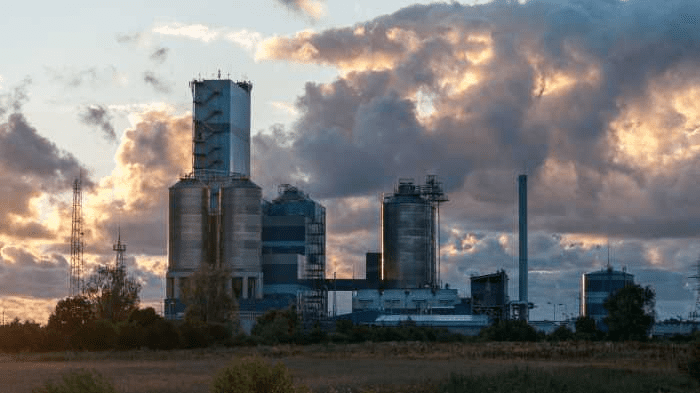Carbon offsets are a way to reduce the amount of greenhouse gas emissions produced by an individual or organization. By supporting projects that reduce carbon emissions, you can “offset” the environmental impact of your own activities. QAS is a global leader in carbon offset certification, and its rigorous quality assurance standard ensures that projects meet the highest environmental and social standards. In this blog post, we will explore how QAS-approved carbon offsets benefit the environment and why they should be part of your climate action plan!
- What is carbon offsetting and why does it matter?
- What is the QAS – quality assurance standard
- What is the carbon emissions calculation methodology?
- What is carbon retirement?
- FAQs
What is carbon offsetting and why does it matter?

Carbon offsetting is a process of compensating for greenhouse gas emissions by investing in carbon reduction projects. The goal is to neutralize one’s carbon footprint or the total amount of greenhouse gases emitted into the atmosphere. There are many different ways to offset carbon, but the most common method is to invest in renewable energy projects, such as wind and solar.
Other popular offsetting options include planting trees and protecting forestland. There are also a number of specialized carbon offsetting organizations, and many countries have carbon offset projects in place to meet their international offsetting obligations. Ultimately, carbon offsetting is a way to reduce the impact of greenhouse gas emissions on the environment, and it is an increasingly important tool in the fight against climate change.
You can’t improve what you don’t measure.
Free Verified Carbon Calculators.
Erase Your Carbon Footprint in less than 5 Minutes
Personal Carbon Footprint Calculator
Business Carbon Footprint Calculator
What is the QAS – quality assurance standard
Quality Assurance Scheme (QAS) is an independent, international quality assurance standard for carbon offset providers. The QAS goal is to verify that carbon offset projects meet specific requirements and contribute to real, permanent, and verifiable reductions in greenhouse gas emissions.
In order to participate in the QAS, offset providers must undergo a rigorous audit process. This evaluation process includes a 40-point checklist that is independently audited on an annual basis to make sure that the quality assurance standard continues to be met.
Once independently verified, carbon offset providers can display the QAS logo on their website and marketing collateral. This assures potential buyers that the provider’s offsets meet the highest standards of quality and legitimacy.
When choosing a carbon offset provider, it is important to make sure that the provider is verified by the QAS. This will ensure that the offsets you purchase are of the highest quality and contribute to real carbon reduction.
What is the carbon emissions calculation methodology?
Carbon emissions calculation is the process of estimating the amount of carbon dioxide that a person, company, event, or product emits into the atmosphere. In order to calculate the carbon emissions from a project, an auditor first looks at the project’s baseline emissions. Baseline emissions are the emissions that would occur without the project.
Once the baseline emissions have been calculated, the auditor then looks at the actual emissions from the project. The difference between the baseline emissions and the actual emissions is the carbon offset. The carbon emissions calculation methodology helps Reduce or eliminate these carbon offsets in an open and timely manner which ultimately protects the environment.
What is carbon retirement?
Carbon retirement is the process of permanently removing carbon dioxide from the atmosphere. This can be done through a variety of methods, including planting trees, capturing and storing carbon dioxide, and using alternative energy sources.
By taking carbon dioxide out of the atmosphere, we can help reduce the amount of greenhouse gases that trap heat and cause global temperatures to rise. In addition, carbon retirement can also help to improve air quality and protect ecosystems. By working to retire carbon, we can make a positive impact on the environment.
Conclusion
In conclusion, QAS-certified carbon offsets are a way to reduce the impact of greenhouse gas emissions on the environment. The process of carbon offsetting is an important tool in the fight against climate change, and it is important to make sure that the provider you choose is verified by the QAS and that the offset project meets all the required criteria.
FAQs

How does the carbon offsetting industry verify offset providers?
Verification is the process of assessing whether the GHG reductions claimed by an offset project are real, measurable, additional, permanent, and verifiable. Verification is performed by third-party organizations that measure and report on GHG reductions from specific projects or across portfolios of projects. For example, the Verified Carbon Standard (VCS), the Gold Standard (GS), and QAS are three popular carbon offset standards in the offsetting industry that require rigorous third-party verification.
What is a government-backed QAS program?
A government-backed QAS program is a scheme that provides full offsetting obligations for businesses that meet the original government scheme requirements. The new QAS program offers businesses the chance to offset their emissions by investing in approved offset projects that meet the new QAS criteria. This can help businesses to reduce their environmental impact and contribute to a cleaner future.
Can a profit organization initiate a carbon offsetting scheme?
Yes, many profit organizations have begun to initiate carbon offsetting schemes in recent years. This is often done in order to offset the organization’s own carbon footprint and/or to promote sustainable practices.
You also might want to read…
Carbon Credits vs Carbon Offsets

Dean Emerick is a curator on sustainability issues with ESG The Report, an online resource for SMEs and Investment professionals focusing on ESG principles. Their primary goal is to help middle-market companies automate Impact Reporting with ESG Software. Leveraging the power of AI, machine learning, and AWS to transition to a sustainable business model. Serving clients in the United States, Canada, UK, Europe, and the global community. If you want to get started, don’t forget to Get the Checklist! ✅
